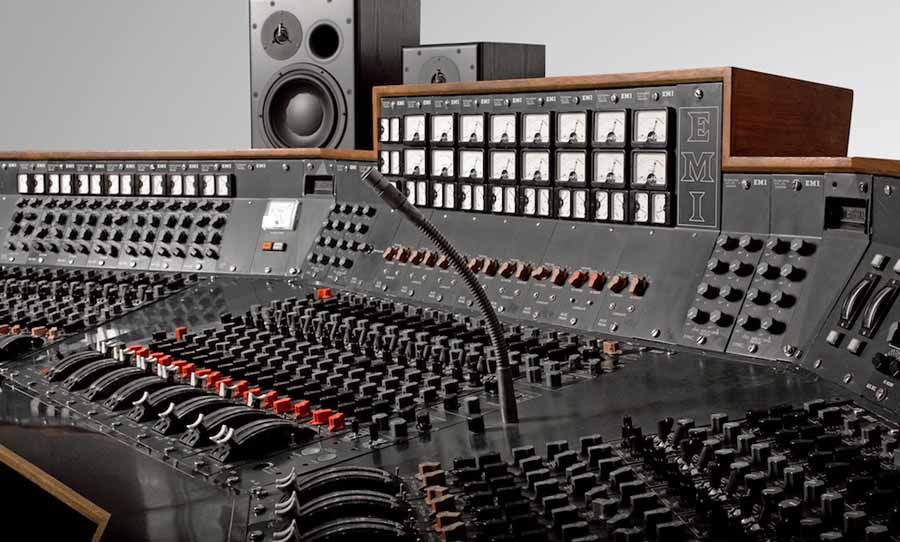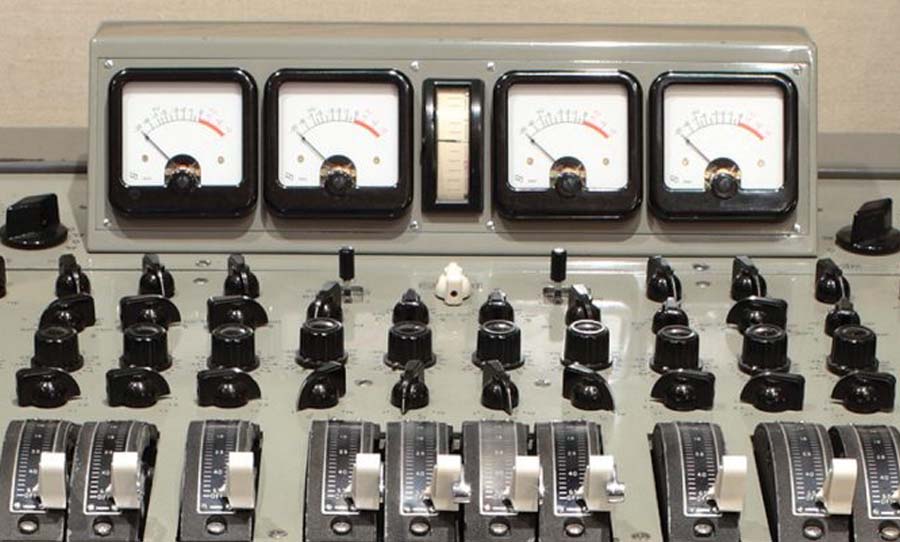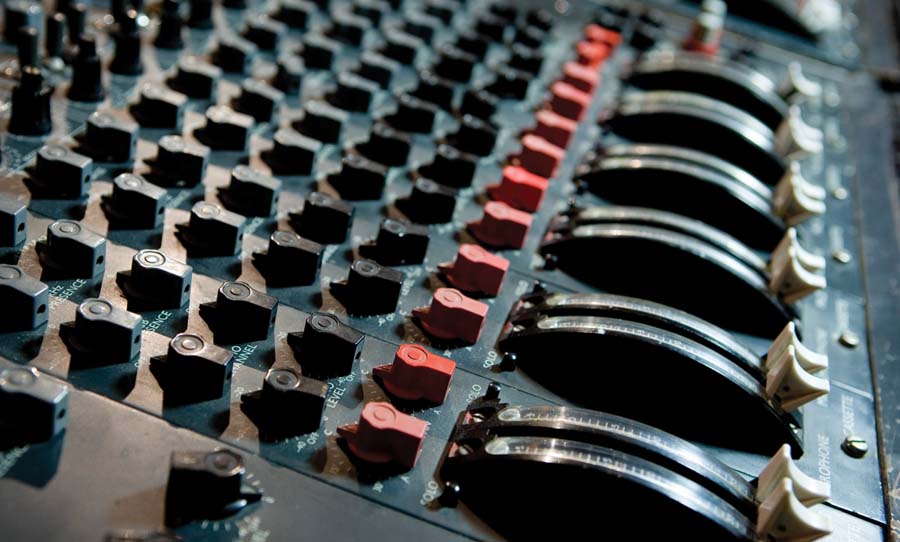They say necessity is the mother of invention and the audio industry is littered with developments that occurred, well, because they had to. The consoles that were produced by EMI in the 1960s embodied that tradition.
The REDD series and TG12345 desks were developed to maximise the options for recording and mixing ever more complex sessions, that were in part facilitated by the parallel leaps forward in tape machine track counts. In realising the vision of Abbey Road engineers and producers, EMI’s consoles also laid the foundations for the modern mixing desk. 
It might have looked like a random assortment of knobs, switches and faders to some, to others, it was the future of record production. Welcome to EMI’s magical machines.
Backed by a Label
To think that a record company could be responsible for such influential audio equipment seems outlandish today, but the ’60s was a different time. The record industry grew considerably richer after this period, but this was the early days, in a pop context at least. Record companies were not yet thick on the ground and those who did exist were formidable.
To cut a long story short, it was in the best interest of record companies to keep pushing the envelope with respect to their core business – making records. Thus, EMI put a lot of energy into beefing up the horsepower of the their studios, especially that one on Abbey Road.
The studio complex was completed in the 1930s, but it wasn’t until the 1960s that the studio became world famous as it played host to a band that was doing pretty well at the time. And up until the installation of the EMI REDD series of consoles, desks were small. Options for multitrack recording were pretty limited too. Abbey Road’s famous Studer J-37 tape machines maxed out at four tracks.
Area 51
The REDD.51 desk was the peak of this series. It offered 8 microphone inputs with four tape machine outputs. The aforementioned knobs – like those that could be found on Bill Putnam’s Universal Audio models in the United States – were replaced with quadrant faders.
It’s not exactly the same kind of fader that we know and love today – it travelled over a curved surface rather than a flat one. But this single development meant that output controls could be placed closely together. So rather than just one hand per knob, several fingers could control several control several faders at the same time. Et voila! Modern mixing was born.
Another mixing desk mainstay that we take for granted nowadays was also found on the REDD.51 – EQ. By today’s standard, the EQ options on the desk were crude, but cleverly designed for the purposes of EMI’s recording interests – Pop and Classic.
Both settings included shelving boosts and cuts at 100Hz, just the thing for eradicating errant double bass rumble, or boosting the raucous punch of Ringo’s kick drum. Classic enjoyed a 10kHz shelving boost or cut, presumably for adding shine to the upper octaves of a violin passage. The Pop had a 10kHz shelving cut and an additional peak boost at 5kHz to help that all important vocal to poke through the mix.
Equipped with valve-powered REDD.47 mic preamps, this desk sounded warm and lively, just the type of tone that you would associate with The Beatles. Yet, a revolution was just around the corner – one that would consign the REDD series to the museum.
Easy as 12345
The TG12345 was the next step in multitrack productions, going hand-in-glove with the widespread adoption of 8-track tape machines. When you consider that the wild conceptual ambitions of bands like The Beatles were met with commensurate commercial success, EMI got inventive once again. The 8 inputs of its predecessor was jacked up to 24, offering unheard of flexibility in recording.
EQ was expanded with each channel offering cutting and boosting at 10kHz and a shelf at 50Hz. The 8 tape output channels had the most flexible tone shaping options, with cutting and boosting at a wide selection of frequencies between 500Hz and 10kHz.
Chief among the additions to this desk was compression on each channel. These modules were a nod to the Fairchild and Altec outboard units that were popular at Abbey Road. They offered little in the way of fine-tuned compression, with a fixed attack time and two ratio choices – 2:1 and 8:1. At the time, however, this configuration was a world leader in recording and mixing, presenting engineers with unprecedented access to processing, all within the ergonomic framework of a console.
Perhaps the biggest difference between the TG and the REDD was the implementation of solid-state electronics, rather than vacuum tubes. Yes, engineers had to sacrifice some of that warmth in order to gain more flexibility. The clean sound of this new breed of desk only touched the end of The Fab Four’s career, but clearly, it was in for a bright future.
Another favourite customer of Abbey Road was Pink Floyd. And while The Beatles’ sound was ambitious Floyd took the pursuit of tone into outer space with Dark Side of the Moon – a project that was realised on the TG12345 and still famous not only for its songcraft, but its kaleidoscopic sonic textures.
The recording world is increasingly dominated by the DAW. Not just because digital audio has facilitated massive track counts, but the also because the moving parts of an entire recording session have be housed beneath your fingers.
In a way, these desks designed by EMI fulfilled this very same wish of engineers and producers – a conduit through which an entire complex project can flow. They must’ve been onto something, because the marker that this company threw down would go on to inspire console designers and music makers for decades to come.





